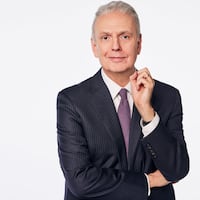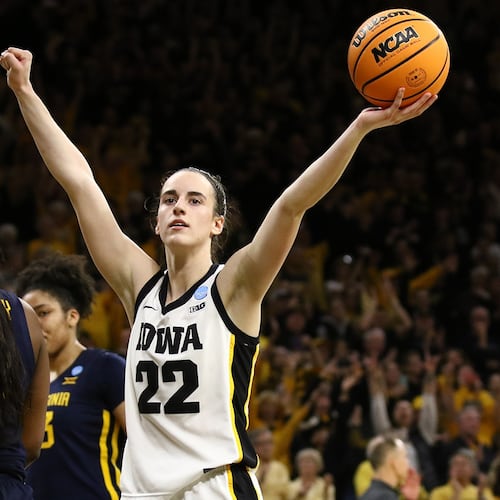Everything was about the collection of young arms, except when it was about Ronald Acuna, who would become baseball’s top prospect. And we can’t say the rebuild around pitching failed: Mike Foltynewicz and Mike Soroka became All-Stars; Max Fried, Ian Anderson, Kyle Wright and the since-traded Bryse Wilson nearly took the Braves to the 2020 World Series. As for Acuna: He’s great.
But the 2021 Braves, after four months of mediocrity, lead the National League East not because of Soroka and Acuna, both lost to injury, and only partly due to the work of Fried and Anderson, the latter having also been shelved. (Foltynewicz works for the Rangers. His ERA is 5.66, second-worst among qualifying pitchers.) The Braves hold first place because of their infield.
Freddie Freeman is the first baseman. You knew that already. He has been in the majors since 2010. He’s the reigning NL MVP. At a time when the Braves were willing to trade anything not bolted down, he was one of two untouchables. (Julio Teheran was the other, which in hindsight was a mistake.) Today’s focus is on the infielders who weren’t exactly unknowns — one was the first player drafted in 2015 — but who weren’t pitchers, weren’t Freeman and weren’t Acuna.
We can’t call Ozzie Albies, Dansby Swanson and Austin Riley kids. Swanson is 27, Albies and Riley 24. Swanson made his MLB debut in 2016. Albies got here a year later. Riley is the relative newbie, arriving in 2019. All were prospects of note, all being ranked among the sport’s 25 most promising at some point.
Credit: Nick Wass
Credit: Nick Wass
Swanson briefly became the face of the rebuilding franchise, the Marietta native having been stolen from Arizona five months after the Diamondbacks made him the 1-1 pick in 2015. In July 2017, he was demoted to Triple-A Gwinnett, where he spent 11 games batting between Albies and Acuna. It was Swanson’s misfortune to have been drafted one spot ahead of Alex Bregman, who would become an All-Star with Houston, and to come along at a time where gifted shortstops – Carlos Correa, Francisco Lindor, Corey Seager, Xander Bogaerts, Addison Russell – were the norm, not the exception.
Swanson has been around long enough to move from overrated – the No. 1 pick should become an All-Star, right? – to underrated. He made 20 errors in 2017. He finished fourth among NL players in strikeouts last season; he’s fifth now. At the All-Star break, he had an OPS of .755 and a batting average of .243. But, as we’ve seen before, nobody gets hotter than a hot Dansby Swanson.
Albies has twice been an All-Star, this season included, but he’s the Brave who tended to get lost in the furor over Acuna. If you looked close, though, you saw his value. His WAR, as calculated by Baseball-Reference, was 4.1 in 2018 and 4.7 in 2019; it’s 2.5 now. If Albies is your third- or fourth-best position player, you’ve got yourself a lineup. Albies took over from Brandon Phillips — remember him? — in August 2017. The Braves won the NL East in 2018, 2019 and 2020. They will again this year. That’s not a coincidence.
Riley was the first non-pitcher drafted in the Great Rebuild. He went 41st overall in 2015. (The Braves took Kolby Allard at No. 14, Soroka at No. 28.) Riley was part of the 2016 Rome Braves, who won the Low-A Sally League title. Acuna was there. The postseason rotation was Allard, Fried, Soroka and Touki Toussaint. Riley hit 20 homers in the regular season, three more in the playoffs. “Our flagship,” then-GM John Coppolella called that Rome bunch.
Credit: Noah K. Murray
Credit: Noah K. Murray
A third baseman by trade, Riley made, due to the one-year presence of Josh Donaldson, his big-league debut in left field. He had nine home runs and 23 RBIs over his first 18 games. Then pitchers stopped throwing fastballs. He tweaked his knee in August. He went 5-for-38 with 18 strikeouts in September. He didn’t make the postseason roster. His WAR over the 60-game 2020 season was minus-0.7; he went 8-for-45 with one homer and 18 strikeouts in the playoffs. This spring, he faced another challenge from the fading Johan Camargo to hold his job.
Through his first 14 games this season, Riley hit .190 with no homers, no RBIs. His numbers today: 25 homers and 73 RBIs, a batting average of .292 and an OPS of .894. With two out in the ninth, he saved Sunday’s game by gloving Carter Kieboom’s smash down the line and throwing him out. Among active everyday Braves, Riley leads the team in WAR.
Without Acuna and Marcell Ozuna, the Braves needed somebody to take the load off Freeman. Three somebodies have emerged. Albies has five home runs and 10 RBIs over his past seven games. Riley since the break: 11 homers, 30 RBIs, a batting average of .339 and an OPS of 1.081. Swanson since the break: nine homers, 30 RBIs, a batting average of .325 and an OPS of .924.
We can’t call any of these sleepers. All have long been regarded as major talents. All have done good work in the past. But the team that dealt for outfielders by the bushel in July — Joc Pederson, Adam Duvall, Jorge Soler, Eddie Rosario — has seen its infield do the lifting in this ascent into first place. Oh, and catcher Travis d’Arnaud has returned, and Freeman has lifted his batting average within sight of .300, and Anderson and Huscar Ynoa are healthy again. After four months of scuffling, this team will win the East in a breeze.
About the Author
The Latest
Featured



